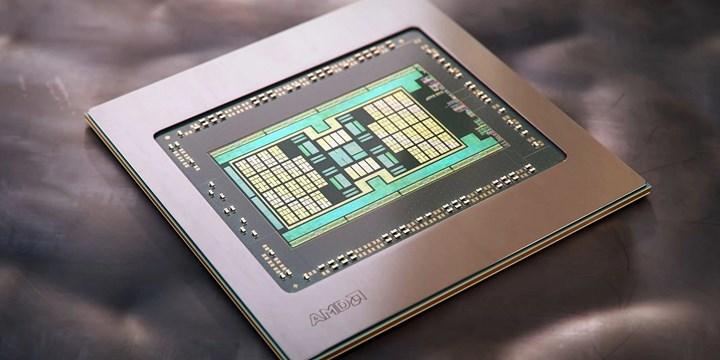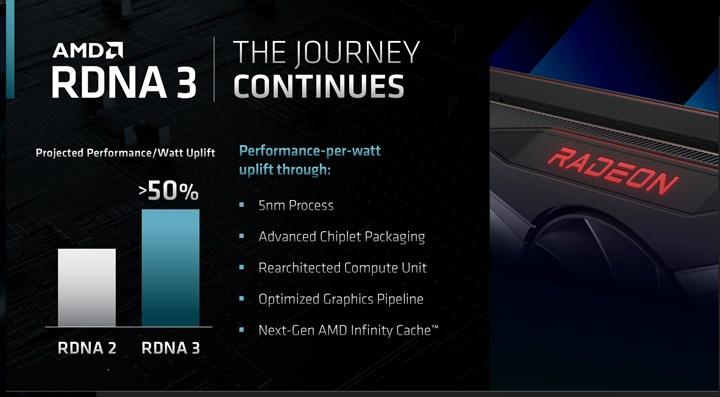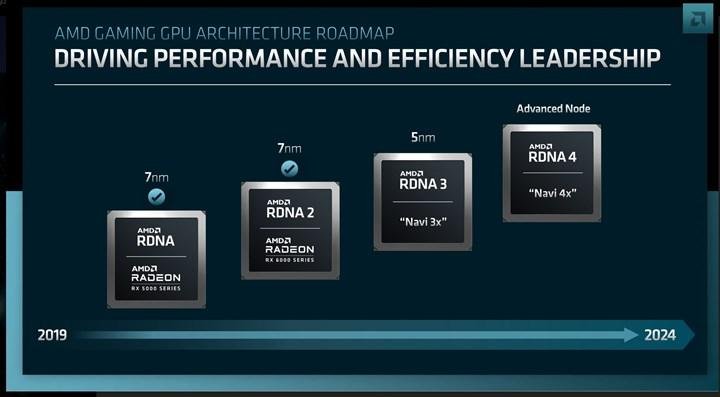
AMD first announced the RDNA 3 architecture in June this year. Sharing the roadmap of graphics cards with RDNA architecture, the company has not shared any details since then. However, new information reveals details about the Navi 3x GPUs, which are shaped around the RDNA 3 architecture.
According to the news based on Angstronomics, three Navi GPUs are expected: Navi 31, Navi 32 and Navi 33. Navi 31, the most powerful and largest of the family, is described as the world’s first GPU with a chip design.
The most powerful Navi 31 features in the family
Named GFX1100, this Navi 31 (Plum Bonito) carries one MCD (Memory Chiplet Die) and six GCD (Graphic Chiplet Die) sections. In addition, it is stated that the GCD is produced in the TSMC 5nm process, while the MCD is manufactured in the 6nm process.
Nvidia GTX 2080 prototype revealed: GTX with RTX look
There are up to 48 scaled WGP (Workgroup Processor) units with the Navi 31 GPU measuring approximately 308 mm². If we dig deeper, there are two Compute Units in each WGP. Therefore, we see that there are 96 CUs, or in other words, 12,288 ALUs in Navi 31. On the other hand, each MCD has 16 MB of Infinity Cache, which means we can have a total of 96 MB of Infinity Cache. In addition, it should be noted that Navi 31, which comes via 384-bit data, has less (128 MB) Infinity Cache than Navi 21, but a decrease in this value does not mean a direct loss of performance.

According to Angstronomics, AMD may use a slightly cropped version of Navi 31 on its next-generation graphics cards, namely the RX 7000 family. According to the ported, the cropped model may come with 42 WPG (84 CU / 10,752 ALU). Looking at the values, we see that an MCD unit is clipped, so this configuration will have a 320-bit bus. The reference card is also reported to have two 8-pin PCIe power connectors.
AMD RDNA 3 Navi 32 features
Navi 32 (Wheat Nas) will target both mobile and desktop segments. In this context, we can say that it will be like a smaller version of Navi 31. The GCD in Navi 32 has 30 WGPs, which is equivalent to 60 compute units (CU / 7,680 ALU). While this GPU has 64 MB of Infinity Cache cache, there are only 4 MCD units. And again, this chip has less (96 MB) Infinity Cache than Navi 22. The GPU also has a 256-bit bus.
AMD RDNA 3 Navi 33 features

Navi 33 (Hotpink Bonefish), which comes with a monolith design, is designed for both desktop and mobile platforms, according to the reports. However, it is stated that AMD wants to use this chip more on the mobile side, so laptops will primarily access this chip earlier. On the other hand, we will see 16 WGP units in Navi 33. Therefore, the chip will have 32 computing units, or 4,096 ALUs. With 32 MB Infinity Cache and a 128-bit bus, Navi 33 will allegedly surpass Intel’s top-of-the-line Arc Alchemist graphics cards.
AMD Radeon RX 7000 graphics card release date
AMD will release the company’s top-of-the-line RDNA 3 graphics cards before the end of this year. Nvidia, on the other hand, will launch its next-generation RTX 4000 graphics card series in August or September. We will see the winner of this competition soon.